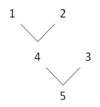Chiropteran types I and II interferon genes inferred from genome sequencing traces by a statistical gene-family assembler
- PMID: 20663124
- PMCID: PMC3091641
- DOI: 10.1186/1471-2164-11-444
Chiropteran types I and II interferon genes inferred from genome sequencing traces by a statistical gene-family assembler
Abstract
Background: The rate of emergence of human pathogens is steadily increasing; most of these novel agents originate in wildlife. Bats, remarkably, are the natural reservoirs of many of the most pathogenic viruses in humans. There are two bat genome projects currently underway, a circumstance that promises to speed the discovery host factors important in the coevolution of bats with their viruses. These genomes, however, are not yet assembled and one of them will provide only low coverage, making the inference of most genes of immunological interest error-prone. Many more wildlife genome projects are underway and intend to provide only shallow coverage.
Results: We have developed a statistical method for the assembly of gene families from partial genomes. The method takes full advantage of the quality scores generated by base-calling software, incorporating them into a complete probabilistic error model, to overcome the limitation inherent in the inference of gene family members from partial sequence information. We validated the method by inferring the human IFNA genes from the genome trace archives, and used it to infer 61 type-I interferon genes, and single type-II interferon genes in the bats Pteropus vampyrus and Myotis lucifugus. We confirmed our inferences by direct cloning and sequencing of IFNA, IFNB, IFND, and IFNK in P. vampyrus, and by demonstrating transcription of some of the inferred genes by known interferon-inducing stimuli.
Conclusion: The statistical trace assembler described here provides a reliable method for extracting information from the many available and forthcoming partial or shallow genome sequencing projects, thereby facilitating the study of a wider variety of organisms with ecological and biomedical significance to humans than would otherwise be possible.
Figures





Similar articles
-
[Genome-wide scan reveals the molecular mechanisms of functional differentiation of Myotis lucifugus and Pteropus vampyrus].Dongwuxue Yanjiu. 2013 Jun;34(3):221-7. Dongwuxue Yanjiu. 2013. PMID: 23775999 Chinese.
-
Transcriptome Profiling of the Virus-Induced Innate Immune Response in Pteropus vampyrus and Its Attenuation by Nipah Virus Interferon Antagonist Functions.J Virol. 2015 Aug;89(15):7550-66. doi: 10.1128/JVI.00302-15. Epub 2015 May 13. J Virol. 2015. PMID: 25972557 Free PMC article.
-
Six reference-quality genomes reveal evolution of bat adaptations.Nature. 2020 Jul;583(7817):578-584. doi: 10.1038/s41586-020-2486-3. Epub 2020 Jul 22. Nature. 2020. PMID: 32699395 Free PMC article.
-
Contraction of the type I IFN locus and unusual constitutive expression of IFN-α in bats.Proc Natl Acad Sci U S A. 2016 Mar 8;113(10):2696-701. doi: 10.1073/pnas.1518240113. Epub 2016 Feb 22. Proc Natl Acad Sci U S A. 2016. PMID: 26903655 Free PMC article.
-
Next Generation Sequencing Revolutionizes Organismal Biology Research in Bats.J Mol Evol. 2023 Aug;91(4):391-404. doi: 10.1007/s00239-023-10107-2. Epub 2023 May 8. J Mol Evol. 2023. PMID: 37154841 Free PMC article. Review.
Cited by
-
Hibernating little brown myotis (Myotis lucifugus) show variable immunological responses to white-nose syndrome.PLoS One. 2013;8(3):e58976. doi: 10.1371/journal.pone.0058976. Epub 2013 Mar 20. PLoS One. 2013. PMID: 23527062 Free PMC article.
-
Type III IFNs in pteropid bats: differential expression patterns provide evidence for distinct roles in antiviral immunity.J Immunol. 2011 Mar 1;186(5):3138-47. doi: 10.4049/jimmunol.1003115. Epub 2011 Jan 28. J Immunol. 2011. PMID: 21278349 Free PMC article.
-
Jamaican fruit bats mount a stable and highly neutralizing antibody response after bat influenza virus infection.Proc Natl Acad Sci U S A. 2024 Oct 15;121(42):e2413619121. doi: 10.1073/pnas.2413619121. Epub 2024 Oct 9. Proc Natl Acad Sci U S A. 2024. PMID: 39382992 Free PMC article.
-
HIV-1 gp120 vaccine induces affinity maturation in both new and persistent antibody clonal lineages.J Virol. 2012 Jul;86(14):7496-507. doi: 10.1128/JVI.00426-12. Epub 2012 May 2. J Virol. 2012. PMID: 22553329 Free PMC article.
-
Interferon production and signaling pathways are antagonized during henipavirus infection of fruit bat cell lines.PLoS One. 2011;6(7):e22488. doi: 10.1371/journal.pone.0022488. Epub 2011 Jul 19. PLoS One. 2011. PMID: 21811620 Free PMC article.
References
-
- Messenger SRC, Smith J. In: Bats, Emerging Virus Infections, and the Rabies Paradigm. Kunz TF, M B, editor. Bat Ecology Chicago and London: University of Chicago Press; 2005. p. 622.
Publication types
MeSH terms
Substances
Grants and funding
LinkOut - more resources
Full Text Sources
Other Literature Sources

